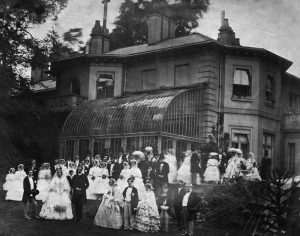Royal Oak station is close to the elevated Westway section of the A40 road. It was named after a nearby public house, the Royal Oak (later the Railway Tap and even later than that, the Porchester). It is one of a number of Underground stations named after a local pub.
The Royal Oak public house stood at the southern end of what is now Porchester Road from at least the 18th century. The junction of Blackman Lane (only later Porchester Road) and the Harrow Road was marked by a tollbooth beside a large house known as ‘Westbourne Park’.
But in the late 1830s the Great Western Railway line split this part of the Paddington district into two. The land here was owned at that time by one William Penney, who made a high compensation claim for his loss.
There were pleasure gardens at the Royal Oak in the 1840s and most of the neighbouring locality was built up around this time. Badly served but with a line already running through the area – the Metropolitan Railway extension to Hammersmith had opened in 1864 – there was pressure for a station.
The station finally opened on 30 October 1871. Royal Oak station was built on the site of William Penney’s house on what was known in 1900 as Lord Hill’s Bridge across the railway.
This photo from 6 August 1857 shows guests at the wedding of the Reverend Frederick Manners Stopford to Florence Augusta Saunders, daughter of Charles Saunders, first general secretary of the Great Western Railway. Isambard Kingdom Brunel was amongst the guests. The house was built before the railway was built but, at the time of the wedding, ran just beside the Lodge.
During the wedding, both Brunel and Saunders were able to experience trains running beside the wedding party along the railway which they had built. Comparing the 1857 photo with the mapping from 1900 map, you can clearly see the conservatory featured.
Railway history is a continuous process – these days the Royal Oak Portal is the western tunnel entrance for the Crossrail scheme (Elizabeth line). The station itself is not part of the Crossrail scheme.
In passing we must mention that there are a few Underground stations that take their names from a public house. The two most obvious ones are Swiss Cottage and Elephant and Castle. Royal Oak is less obvious and perhaps the most obscure is Manor House.


